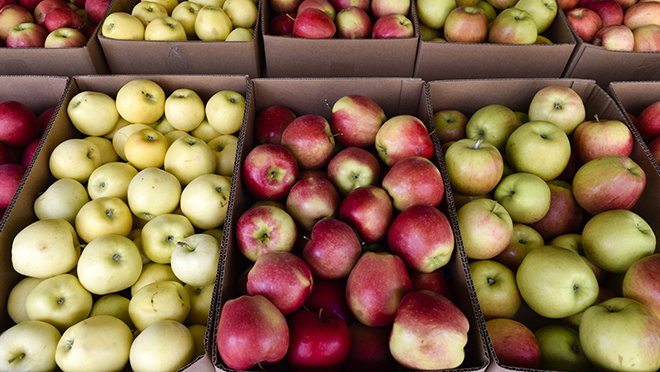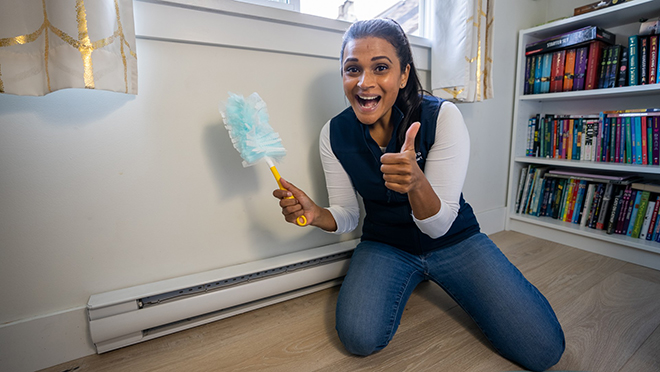10 things to do before it gets cold outside

Fun things to do, plus ways to prep your home for the chill
You know summer is over when kids are back in school, the Canucks are at training camp, and you don't get eaten alive by bugs on your favourite hike.
You really know it's over when your heating system kicks in.
Don't despair. Rejoice at the prospect of crowd-free hiking, camping, and weekend getaways. Just don't forget that your home may need a little TLC to ensure it will be comfy and energy-efficient – and your energy bills won't be too high – for the shorter days and colder temperatures soon to arrive.
Here are 10 things to get done (and have fun) in the coming weeks.
1. Go on a weekend getaway
Fall colours. Spa weekends. Wine tasting. Paddling on a lake. There are many great excuses for booking a fall getaway.
Check the weather forecast then see what sort of accommodation is available online. The summer rush is over, so your chances of booking are much better post Labour Day.
2. Heat only the rooms you're using, and consider smart thermostats
Make it standard practice in your home to only heat the rooms you're using, and turn down the heat when you're away and overnight.
Set the temperature at 18°C while you're in the kitchen or active at home, and at 21°C when you sit down to read or watch TV. It's a general guideline, and if someone needs more warmth, remind them that a hoodie or sweater, or a pair of slippers, will keep them comfy.
If you're in a home equipped with the year-round comfort afforded by a heat pump, stick to the strategy of set it and forget it, which is the go-to for efficiency and comfort.
Consider upgrading to smart or programmable thermostats if you don't already have them. A smart thermostat connects to your home's internet and allows you to control your household temperature remotely on your smartphone or laptop. It's convenient, and can help save you money on your electric bill.
3. Book the best spot at your favourite campground
It might have been tough to get a spot at your favourite campground this summer. Now, with a little luck, you'll get the spot with the water view (and far away from an outhouse).
Weekends are still busy, so act soon. And if you're lucky enough to get away during the week, possibilities abound.

4. Go for a bug-free, crowd-free fall hike
Hiking is popular these days, and B.C.'s trails have been busy enough that day-pass reservations are now required on several trails near Vancouver. But trails should be less crowded in the fall, and you shouldn't have to worry about biting insects.
Here are just a few (of many) fabulous fall hikes from around the province:
Southwest coast
- Norvan Falls
- Sea to Sky Gondola and Al's Habrich Trail
- Stawamus Chief Trail
- Mount Seymour Peak Trail
- Dog Mountain Trail, Mount Seymour
- St. Mark's Summit Trail
- Garibaldi Lake and Black Tusk
Vancouver Island
- Wild Pacific Trail, Ucluelet
- Clover Point to Ogden Point Trail
- East Sooke Park: Aylard Farm to Beechey Head
Thompson-Okanagan
- Sun Peaks Resort trails
- Apex Trail and Paul's Tomb Trail, Knox Mountain
- Helmcken Falls Rim Trail, Wells Gray Provincial Park
North and central B.C.
Eastern B.C. and the Rockies
5. Insulate and draftproof: 45% of heat loss is through walls, floors, and the roof
If you have the time and budget to take advantage of rebates of up to $1,200 for insulation upgrades, book an appointment with a Home Performance Contractor Network (HPCN) member today. If you don't, or if your home is already well-insulated, ensure that your windows and doors aren't undermining the cause.
Aging or ill-fitting weatherstripping around windows and doors can leave gaps that cause drafts, add to heating (and cooling) costs, and make your home uncomfortable. Fixing those issues with do-it-yourself draftproofing – or installing insulating window film on leaky windows – is inexpensive and easy.
Learn how to draftproof your home.
6. Book 18 holes at your favourite B.C. golf course
Summer can be a tough time to get in around of golf, and the midday heat makes it tough to get through a round of 18 holes. All that changes with the arrival of fall.

7. Check your heating system, and clean or change filters
If you have electric baseboards, wipe down the surface of the heater and vacuum the fins to remove as much dust as possible. If you don't, not only will you smell that dust heating up the first time your baseboards come on in the fall, they'll also be less effective at circulating heat.
If you have a heat pump, clean the filters on your indoor units several times a year and replace them once a year. And clear away clutter around both your indoor and outdoor units, including furniture or curtains indoors, or foliage and snow outdoors.
Check your heating system for visible leaks and loose joints, including space around air registers and grilles, duct connections, floor joists and around the heating unit itself. Clean surfaces and seal any leaks with duct mastic or foil tape. Insulate ducts with vinyl or foil backing facing outward.
8. Go to a fall market or attend a music festival
B.C.-grown apples are never fresher than they are right now, and an abundance of blueberries makes this the time to stock up and freeze berries for the winter. Fall markets are overflowing with options, ranging from beets and Brussel sprouts to spinach and peppers.
There are also some great outdoor music festivals this month, including Victoria's Rifflandia (TLC, Feist, The Beaches, etc.), Ladner's Barnside Harvest Festival (Sam Roberts, Loverboy, The Glorious Sons), Spences Bridge's Desert Daze, and Revelstoke's Luna Nocturnal Art & Wonder Festival.
9. Update your emergency kit, prepare for storms, wildfires and earthquakes
It's been less than three years since a severe winter storm, known as an atmospheric river, caused flooding and extensive damage across many areas of B.C. But a 2022 BC Hydro survey showed that 64% of British Columbians had not taken any steps to prepare for storm-related power outages.
That survey also found that less than half of B.C. homes have emergency kits, which can be vital year-round, including during wildfire season. Buy or build an emergency preparedness kit that will last at least 72 hours and which includes at least a first aid kit, bottled water, non-perishable food items, a flashlight and batteries, a battery pack for your cell phone, warm clothes, and blankets.
Make a contingency plan with your household and ensure that all who live with you understand it. Remind everyone that a downed power line is an emergency, and that they should stay back at least 10 metres and call 9-1-1 immediately if they encounter one.
Get more details on how to be prepared and stay safe during a power outage.
10. Go fishing (they're hungry)
Trout don't like the warmer waters of summer, especially at lower-altitude lakes. But the so-called “doldrums” are over, and now is the time trout start to get more active as they fatten up for the winter.
Salmon runs are also in full swing in fall, in various parts of B.C.
For tips on where and when to go, and what to use to catch fish, visit a local tackle shop. And dress warmly.